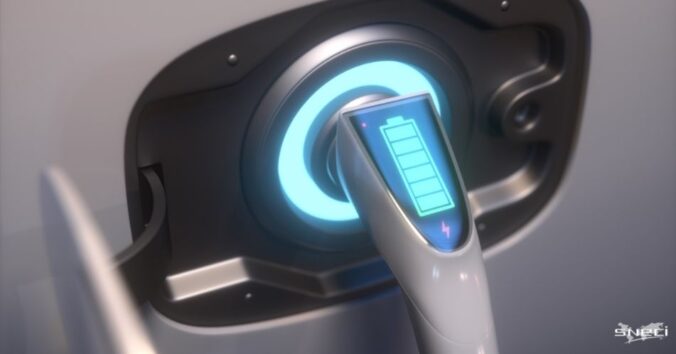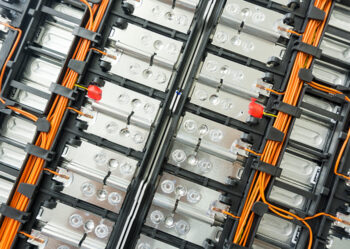Are we really heading towards a gradual end to thermal vehicles in France?

In June 2022, the European Parliament voted to ban the sale of new combustion engine vehicles (cars and small commercial vehicles, excluding trucks) in Europe from 2035.
Only new vehicles with electric or hydrogen batteries will be sold. But in concrete terms, what does this mean for car manufacturers and European households?
Is it really feasible and how?
Will new combustion engine vehicles really disappear by 2035?
In order to reach their goal of becoming the first carbon-neutral continent by 2030, the European institutions are striving to put in place measures to reduce greenhouse gas emissions. Many sectors are concerned, including the automotive industry.
To this end, car manufacturers must redouble their efforts to comply with the decision of the European Parliament. In fact, they have already understood that it has become essential to find solutions that would allow them to compensate for the ban on the sale of new thermal vehicles (from 2035). Especially since the text requires European manufacturers to reduce their CO2 emissions by 15% by 2025, 55% by 2030 and 100% by 2035.
Thus, most of the largest European OEMs such as Stellantis, BMW, Volkswagen, Renault, etc. have already begun a process of electrification of their ranges. Some of them even plan to become 100% electric such as Alfa Romeo, Fiat, Volvo… And, it is mainly electric, hybrid and/or hydrogen vehicles that will take over, in order to replace conventional thermal vehicles.
However, this does not mean that consumers will be obliged to change their current combustion engine vehicle. The (old) thermal vehicles bought before 2035 will be able to continue to run! Indeed, only new vehicles are concerned by the European text, so used combustion vehicles will not be affected and can continue to be used even after 2035.
Moreover, it is interesting to note that Europe will not prohibit the sale of internal combustion vehicles to other countries, so exports will continue.
Electric, hybrid and hydrogen vehicles: ideal alternatives to thermal vehicles?
The electric vehicle
The electric vehicle will undoubtedly be one of the ecological alternatives to the thermal vehicle. Since it does not burn any fuel, it does not emit any greenhouse gases. Moreover, it does not have an exhaust pipe, which technically makes it incapable of emitting CO2. Moreover, its noise pollution is very low compared to the thermal vehicle. An electric vehicle consumes 3 times less energy than a combustion vehicle.
However, it is important to know that the production cost of an electric vehicle is about 50% higher than that of a combustion vehicle. This means that buying an electric vehicle would cost more than buying a combustion vehicle. The purchasing power of consumers will therefore be impacted. Moreover, electric vehicles have a shorter range and a much longer charging time than combustion vehicles. Thus, the electric vehicle would be more suitable for daily trips such as home to work for example.
Moreover, contrary to what one might think, “the electric vehicle is not “100% green”. Indeed, each time a driver presses the brake pedal, it causes friction between the brake pads and the disc of the vehicle, which results in the release of dust or “fine particles” that pollute. Braking alone is responsible for 20% of the particles in road traffic.
It is therefore necessary to find solutions to counter the disadvantages that an electric vehicle can have.
The hybrid vehicle
Not to be confused with the electric vehicle, the hybrid vehicle has two engines: one is thermal and the other is electric. Its operation is simple: it runs on electricity when the speed is not too high. A small capacity battery provides the electricity necessary for its operation.
The hybrid vehicle pollutes much less than the thermal one thanks to the electric engine which does not reject greenhouse gases. Moreover, the electric battery recharges itself thanks to the vehicle’s inertia. The hybrid also consumes much less fuel than a combustion vehicle, which is a financial gain for users.
But, like the electric vehicle, the hybrid costs more to buy. Moreover, hybrids are not very interesting if you drive in high-speed areas on a regular basis, since in this case the combustion engine will be in action. Finally, the battery recharge must be monitored.
The hydrogen vehicle
The hydrogen vehicle works thanks to a fuel cell. Hydrogen is stored in the vehicle’s tanks and is used to constantly power the fuel cell. Considered as a real alternative to the internal combustion engine, the hydrogen vehicle has many advantages.
According to its production method, hydrogen does not generate any CO2 emissions. The hydrogen fuel cell is lighter than a battery. It would be possible to fill up in 15 minutes, as opposed to at least an hour and a half with an electric car.
However, there are still some areas for improvement. The operating costs of hydrogen remain quite high. Moreover, some forms of hydrogen remain polluting: the grey hydrogen process consists in producing hydrogen by biomass thanks to the methane present in natural gas. This method has the disadvantage of emitting carbon dioxide, but in smaller quantities.
Thus, there are still many challenges to be met if we want electric, hybrid and/or hydrogen vehicles to be effective alternatives to thermal vehicles in the long term.
Numerous challenges to be met to face the end of the combustion engine
The replacement of the internal combustion vehicle by the electric vehicle will lead to a considerable increase in the use of electrical energy. According to INSEE, a total electrification of the French fleet would lead to an increase in annual electricity consumption in France of a little over 100 TWh, i.e. about 25% compared to current consumption.
Moreover, the transition from thermal to electric power could transform our dependence on oil into a dependence on mining, because of the batteries used in electric vehicles, the production of which requires the supply of “rare metals”. These are certain raw materials such as cobalt, graphite, lithium, etc., which are unevenly distributed around the world. The Democratic Republic of Congo (DRC) alone holds nearly half of the world’s cobalt reserves. As for graphite, 2/3 of the world’s graphite reserves are located in Brazil, China and Turkey. This forces European countries to depend on these countries.
In addition, the production and assembly of batteries is dominated by a few Asian players with great expertise in the field. Two thirds of the market is shared between only three players: CATL in China (26%), LG Energy Solution in Korea (25%) and Panasonic in Japan (9%). As for Europeans, they are still struggling to relocate this production to their country, although the opening of some factories is planned in the coming years. Indeed, the objective is to reduce dependence on Asian players by producing batteries locally.
The production and distribution of hydrogen is also an issue that will need to be addressed quickly and efficiently. In order to cover ¼ of the hydrogen vehicle trips in France, it will be necessary to produce a large quantity of green hydrogen which would require huge quantities of electricity. It will therefore be necessary to create and develop infrastructures to increase our production capacity. Moreover, in order to be correctly distributed, it will be necessary to multiply the number of hydrogen pumps. But these cost up to 10 times more than thermal pumps.
To conclude, we can see that thermal vehicles (new) are tending towards a progressive disappearance and will be gradually replaced by other alternatives such as electric, hybrid and/or hydrogen vehicles. However, although they are less polluting, these alternative vehicles also have their share of disadvantages (long recharging time, low autonomy, costly production…). It is therefore important that the various players in the automotive industry think about solutions that could solve these problems. It will also be crucial for Europe to reduce their dependence on other countries and to develop their local production capacities.
SNECI: green mobility facilitator for automotive professionals
Our various solutions in business development and industrial performance on an international level allow us to support suppliers and manufacturers in different fields of expertise.
In industrial performance, we provide our clients with the means to achieve operational excellence, by supporting them in their industrial projects or by training and coaching their teams. We also have in-depth expertise in assessing industrial companies and implementing best practices in quality, purchasing and logistics.
In business development, our team partners with suppliers who are expanding into new regions or seeking to acquire new customers by acting as an extension of their sales, project, quality and logistics teams. We also advise companies on their partnership and acquisition strategy.
In parallel and still in order to meet the needs of the industry, we offer specialized training on the production of electric vehicles to several hundred customers worldwide.
For example, our TS01: Electric Vehicle Technology: Components and Operation training course, given by our experts in the field, allows you to discover the technological world of the electric vehicle in its ecosystem with its specificities by market. This training will also provide you with solid knowledge on the evolution of the services related to the electric vehicle for a better understanding and anticipation of the evolutions of this field. You can find all our training courses here.
You will have understood that the electric vehicle, although it has many advantages, does not guarantee a 100% ecological production, but it is a step forward towards a greener and more sustainable automotive industry.
At SNECI our commitment to the environment is important, we develop many partnerships with “green” players in the industry to provide the best solutions to our customers in many industries. We are committed to collaborating with actors involved in repairing tomorrow’s world, whether in the modernization of factories, in the improvement of processes or in the support of a greener industry.
If you would like one of our experts to contact you and support you in your industrial performance improvement projects or in your business development in France or abroad, please contact Laura@sneci.com or contact us directly via the contact us tab on our website!




